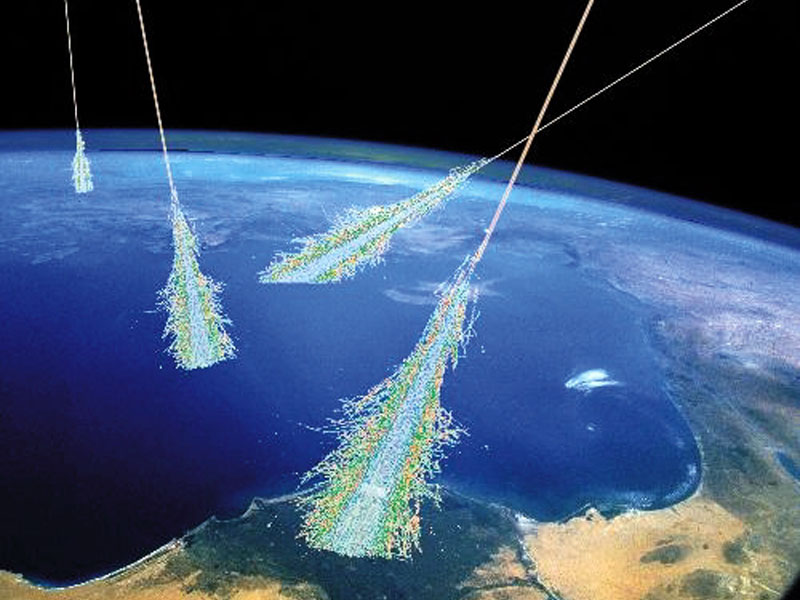No Proof That Cosmic Rays Cause Global Warming, Study Says

By now, it's pretty clear that carbon dioxide, released by burning fossil fuels, is responsible for most of the warming seen throughout the world in recent decades.
As the Intergovernmental Panel on Climate Change concluded in September, it is "extremely likely" that human activities have caused most of the warming of the planet's surface since the 1950s.
But theories to the contrary linger. One of the more persistent is that global warming is caused by cosmic rays and changes in levels of solar radiation. As the theory goes, cosmic rays — which are thought to emanate from supernovas, explosions of distant stars — can increase the number of clouds in Earth's atmosphere by filling the atmosphere with charged particles, upon which water vapor condenses. The clouds, in turn, reflect some sun and cool the globe.
However, during times of increased solar radiation, fewer cosmic rays enter the atmosphere, as they are deflected by charged particles spit out from the sun. When this happens, the globe warms, as the thinking goes, both because there is more solar radiation to heat up the atmosphere and because there are fewer cosmic rays and thus fewer clouds to reflect incoming light.
A new study published today (Nov. 7) in the journal Environmental Research Letters looked for evidence to support that theory. It found almost none.
"We couldn't find anything to corroborate this theory," said Terry Sloan, a retired particle physicist at Lancaster University in England who now studies the climate. [The Reality of Climate Change: 10 Myths Busted]
In the study, Sloan and his co-author Arnold Wolfendale looked for evidence that cloud cover can expand with an increase in charged particles, which can be caused by cosmic rays as well as nuclear bombs, Sloan told LiveScience. After looking to see if there were more clouds observed after events that created tons of charge particles, such as atmospheric nuclear tests and the Chernobyl nuclear disaster, the scientists didn't find any increase in cloud cover during these events, Sloan said.
Sign up for the Live Science daily newsletter now
Get the world’s most fascinating discoveries delivered straight to your inbox.
The scientists also looked at historical records of global temperature and incoming levels of solar radiation. In several instances, they found a weak link between global surface temperatures and incoming cosmic rays, although this warming occurred one to two years prior to the increase in cosmic rays, Sloan said.
All in all, the scientists concluded that variations in solar radiation and cosmic rays couldn't have caused more than 10 percent of the warming observed in the 20th century. Thus the phenomenon is not a "significant underestimated contributor to the global warming," as some have claimed, the scientists wrote in the study.
Another study published in the same journal in September found scant evidence that cosmic rays play any role in global warming. "I found little evidence of the cosmic rays having a discernible affect on a range of common meteorological elements: temperature, the barometric pressure or precipitation," study author Rasmus Benestad of the Norwegian Meteorological Institute told Physics World.
A 2010 report by the National Academy of Sciences likewise found that "a plausible physical mechanism [for cosmic rays effecting global warming] has not been demonstrated" and that "cosmic rays are not regarded as an important climate forcing."
"The conclusions come as no surprise," said Raymond Bradley, a researcher at the University of Massachusetts who wasn't involved in the study. "Numerous studies have concluded that solar forcing cannot explain recent warming."
Email Douglas Main or follow him on Twitter or Google+. Follow us @livescience, Facebook or Google+. Article originally on LiveScience.










